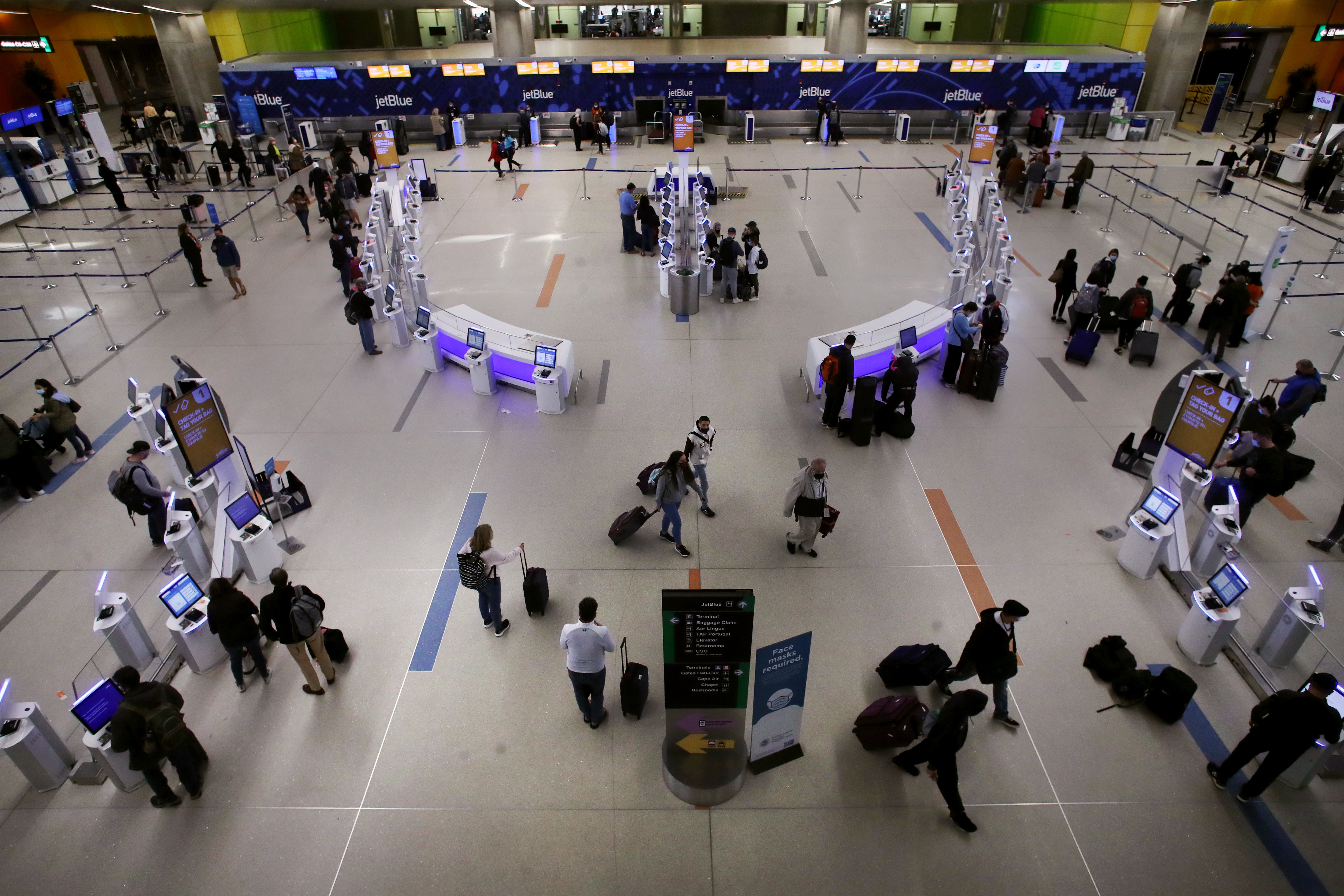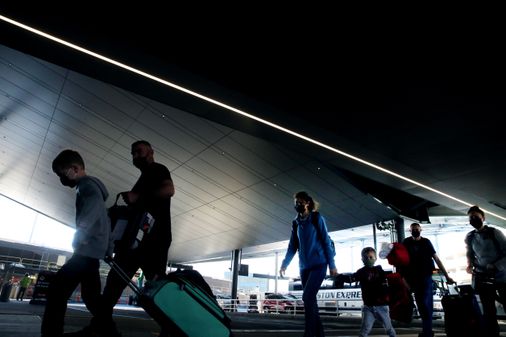“I’m a real believer that space can affect people, as an architect,” said Luciana Burdi, Massport’s director of capital programs and environmental affairs. “So the more we design space to be more conducive, more inclusive, the better we can affect people.”
Even during the height of pandemic restrictions, Logan was never quite desolate. But there were far fewer passengers milling around. Massport measured about 804,832 passengers last December, a 76 percent decline from the 3.3 million who flew through Logan in December of 2019. By this September, that number was back up to 2.2 million, and with the lifting of restrictions on international travel, it will probably keep rising through the holidays.
That means pointing passengers to some new (or not-so-new) amenities: big touchscreens for terminal maps; comfortable seating for disparate needs, recognizing that those classic black airport gate chairs may not suit someone trying to send out a few preflight e-mails on a laptop, or a family with young children who need a bit more space.
Massport is also pushing its new app, FlyLogan, which chief information officer Kwang Chen hopes will make travel days a little less stressful. Through the app, passengers can book a parking reservation or a Logan Express ticket in advance. They can access live, multilingual customer service representatives by video chat, find flight information, and order food or coffee from anywhere in the airport to be hand-delivered to them wherever they are.

The delivery service, branded BOS2GO, allows for ordering from anywhere in the airport, Chen said, much like on DoorDash or GrubHub. A hungry passenger standing in a security line at Terminal A could order, say, a fisherman’s platter from Legal Sea Foods in Terminal C or a latte from Peet’s Coffee & Tea in Terminal B and — once they’re through security — a delivery worker in a light-blue jacket will bring it to their gate. The service is being run by Houston-based airport e-commerce company Servy, formerly known as Grab.
“What creates the most stress for people to fly is the uncertainty,” Chen said. “How long is the TSA wait time going to be? Am I going to get parking? Am I going to get a Logan Express ticket? Am I going to have time for food? … What we’re trying to get is giving people certainty.”
The pandemic, and the freefall of passenger travel it brought, led Massport to put some renovation projects on indefinite hold. In June of 2020, Massport’s board voted to cut a five-year, $3 billion construction plan by about a third. Plans for a monorail-like people mover, two parking garages, and part of the Terminal E expansion were shelved.
But some projects are moving forward: Passengers will see a new canopy outside the pickup area at Terminal C, made of a transparent material to shield them from rain or snow while still allowing in natural light. It will be covered by solar panels that feed back into the airport’s power grid, said Massport spokeswoman Jennifer Mehigan.
In the coming years, passengers will also see updates to the often-congested roads leading into Terminals B and C; a connection between those terminals behind security, so passengers can roam a larger area and visit more restaurants; and more natural light and runway-facing windows in an airport built as a hodgepodge of concrete.
“We [as people] are very good at enclosing ourselves in rooms,” said Jorge Barrero, a principal and regional design director at architecture firm HKS, who with interior design project manager Bethany Fox wrote a series of articles about creating more breathable airports. “We rely on these mechanical systems and these filters ,and often they get changed. But how often do we want to just be able to open a window, right? And that’s something that’s difficult to do in an airport.”
Barrero and Fox, who are not involved in Logan redesigns, said incorporating elements of nature and natural light can help make travel feel a little more relaxing.
“We worked on a research project investigating bringing more natural light and increasing the air quality for passengers — and from these small-scale solutions, you can integrate creating, you know, talking about these little pockets of space, where we can relax and have clean air,” Fox said. The goal ultimately would be”working our way to kind of this whole new prototype that has an open air for all.”
In recent decades, designers have tried to shift away from seeing airports as “non-places” — the term French anthropologist Marc Augé came up with to describe spaces devoid of personality, meaning, or belonging — toward something with a more distinct local flavor.
“I think that you really want to give a sense of place, and this is for every airport,” said Rebecca Hollins, an associate principal at architecture firm PGAL who is working on designing interiors in the connection between terminals B and C. “You want to know that you are in Boston.”
That can come in the form of public art; Hollins described a planned art exhibit showcasing Boston musicians and venues, which will include QR codes passengers can scan to hear artists’ music. It can also come with using local retailers or restaurants, like Legal Sea Foods or Stephanie’s, in places that used to be reserved for national chains alone.

“It gives the passenger a neat experience, a regional experience,” Hollins said.
Despite some delays early in pandemic lockdowns, the lower passenger volume has meant some of these changes are coming slightly ahead of schedule.
“The challenge of Massport is that we are in a continuous renovation,” said Burdi, Massport’s director of capital programs. “I would like the space to welcome them to Boston, and to give them a warm embrace when they leave.”
Gal Tziperman Lotan can be reached at gal.lotan@globe.com or at 617-929-2043.
